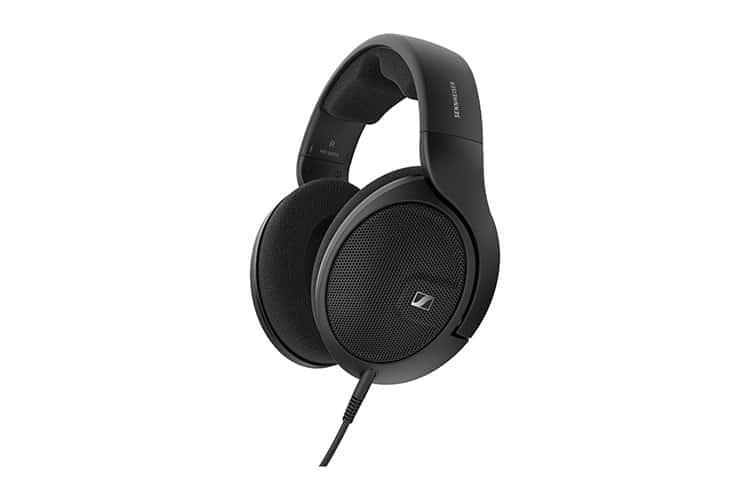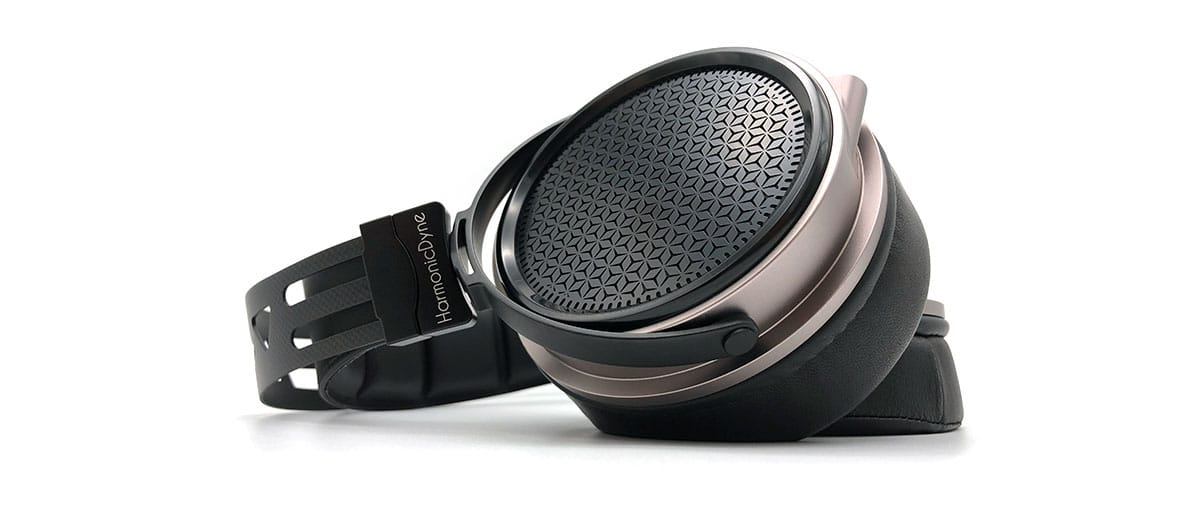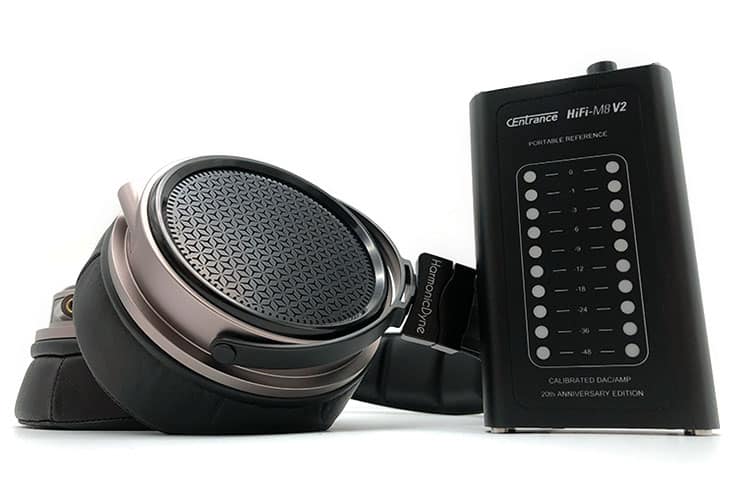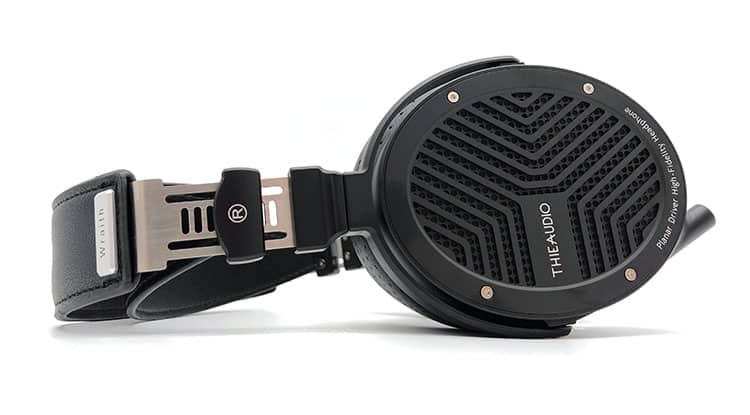Synergy
Efficiency
Pairing the default XLR cable with the Topping DX5 is smooth as butter since the DAC/Amp has a full-size XLR port even though it is just sharing the same signal with the single-ended 6.35mm output.
From the efficiency level of the G200, it only needed around -35dB to be loud enough when less efficient gears like my Audio-Technica ATH-ADX5000 will go higher to -28 or more depending on the song.
For those who fancy bringing their G200 around and also don’t want to bring any extra adaptors, the CEntrance Hi-Fi M8 V2 will be more than happy to bring life to your collection on the go. With this pairing on high gain, I only needed about 20-30% of the volume wheel control.
Pairings
Both the Topping DX5 and the Centrance Hi-Fi M8 V2 are meant for critical listening and prioritize signal accuracy. This may be so and the pairings may seem uninteresting, but hear me out as the portable DAC/Amp from CEntrance has a few differentiations to tailor the sound of the G200.
First, let’s get the DX5 out of the way. I’ve tested it with other headphones and the only thing I’m missing with the G200 is treble resolution and dynamics meaning the cans can still improve in this aspect.
The Hi-Fi M8 V2 gave the G200 a drier sound overall, especially around the treble and bass. Listening to stringed instruments on the G200, violins are more vibrant sounding and a bit finer as well.
The DX5 is a bit wetter when compared and is the less airy and more fatiguing of the two. Similarly, the midrange on the CEntrance pushed more clarity on the G200 even though it has a less forward presence.

Select Comparisons
Sennheiser HD560s
$199
Technical
Sennheiser isn’t resting on its laurels having recently released a budget dynamic headphone based on the HD5xx platform with influences in sound and design cues from the more expensive HD660s model.
The HD560s has an all-new polymer-blend transducer with a less efficient 120W impedance but a higher 110dB sensitivity. Sennheiser made the HD560s relatively easy to pair with any source while also carefully improving the technicalities to reach deeper bass as low as 6Hz.
And unlike the flat-facing drivers of the G200, to capture that speaker and room-like experience, the HD560s drivers are angled in a triangular position with the ears.
Design
I bet even non-audiophiles will have at least seen the HD599 at some point making the HD560s the easier design to digest plus it has a new blackened but still plastic exterior. Of the two, however, the HD560s is the cheaper build not just in materials but also with the awkwardly glued padding on the headband and loser joints.
At 240g, the HD560s is lighter on the head but clamps way more than the G200. At least the dimensions and fit of the HD560s have been established over time through its brothers so there is no problem with the earpads sealing around the ears.
Performance
Swapping between the HD560s and the G200 couldn’t sound more different. Not because one is better than the other, but because the tuning and use case of the two is just that far apart making a great combination to make up a collection.
Speed and accuracy are what make the HD560s tick and are the name of the game. The softness and rounded edges on the G200 are gone, replaced with a more engaging and transparent sound.
Sub-bass extension reaches deep on both headphones diffusing a heavy beat well. Here, the detail goes to the G200 but the HD560s with its drier timbre offers more honesty and less fuss.
Nevertheless, in the case of bass guitars, the thinner twang on the HD560s handles the exercise with better precision since the added girth on the G200 can sometimes overwhelm its neighbors.
With the same DNA as its legendary brothers, it comes as no surprise that compared to the darker midrange of the G200, the vocals on the HD560s simply take it away in presentation and breathiness.
Honestly, there are more than a few cases where I find myself leaning in to try and reach the singers on the G200 as it scoops down the upper midrange.
The brighter tuning of the HD560s makes it more fatiguing but its dynamics are surprising for such a cheap device putting the G200 to its paces. While not as detailed, the HD560s still opens up the scene better not just with soundstage but with layering.
Having a thinner timbre though works against the HD560s in making for a completely natural sound as it makes treble instruments and live audiences brittle sounding.
Thieaudio Wraith
$549
Technical
A companion of the G200 in the planar field, the Wraith has a smaller 97mm driver and has a slightly less extended frequency range of 20Hz to 40kHz.
With little to go on with the planar driver assembly of the Wraith aside from its German conductor membrane and magnets 1.5x stronger than its predecessor, what’s key to note with the development of the Wraith is its focus to come up with a sound meant for professional engineers.
Here, Thieaudio went deeper into fine-tuning their driver for an accurate pinna compensation, especially around the 1-3kHz range.
Design
The two headphones’ basic design is very similar with an adjustable suspension strap and 90-degree ear cup swivel. Stopping here with the similarities, other components are barely the same.
The headband of the Wraith is leather-wrapped spring steel angled with a sharp turn inward to conform to the head. There is no foam on the leather touching the top of the head for the Wraith while the G200 managed to squeeze in a few thin memory foam blocks to help with comfort.
Another striking difference between the Wraith over the G200 is its oval-shaped ear cups. It is lined with Velcro to allow for easy pad replacement while the G200 uses a ring guide to fit either one of its provided ear pads.
Performance
Also coloring the bass in a way, the Wraith offers slightly less girth. It may not overwhelm the neighboring images as much but you can still expect better rumble and more filling presence to come out of the G200.
The G200 improves on the dynamics of the Wraith as the latter is more compressed and smoothed out. The strumming of a bass guitar on the G200 simply bites with more emphasis and clarity.
Guitars resonate more against the finer and farther presence of the Wraith. This is even after taking into account that strings on the G200 have a thicker and darker quality.
But those looking for more accuracy in midrange and tonal balance should look at the Wraith. The G200 will fit the bill more for casual listening and treble-sensitive individuals.
Supporting this, horns arrived with more rawness from the Wraith. The G200 felt a bit blunted leaving cymbals sounding less metallic and diffused.
With soundstage, the Wraith places images with more evenness and is farther from one another. The top-end extension however is better detected on the G200 accompanied by a slightly stiffer characteristic.
Audeze LCD-X
$1199
Technical
The huge round cups of the LCD-X aren’t just for show as it carries a planar driver 4mm bigger than the G200. Launched in 2013, the technical elements of the LCD-X have been improved upon through the years to be in its form today.
Powerful neodymium magnets move the ultra-thin Uniforceä diaphragm forcing air to pass through the company’s patented Fazor waveguides. The LCD-X is also more efficient than the G200 with a lower 20W impedance and a higher 103dB sensitivity.
Design
Audeze separated the adjustment mechanism of the LCD-X from the spring steel headband and the leather suspension strap assembly. Unlike the G200 where the carbon fiber piece continues to be the gliding part as well, the LCD-X has a steel rod visibly sticking outwardly of the unit ratcheting into position.
And even when the G200 has more room to swivel the cups around, the LCD-X has a more conforming fit that seals around the ears better. Both headphones though look big on the head but the 612g LCD-X isn’t just heavier, it is also bulkier to wear.
Performance
For some similarity even though the LCD-X is drier sounding than the G200, both headphones do extend well and portray a clean bass guitar solo. Yes, the LCD-X is more precise and better at giving the definition a kick drum needs, but with sustained synth bass, the G200 doesn’t fall that far behind.
Thinner and more natural sounding, the gusto of the LCD-X with vocal power is more impressive. It has a more dynamic and reverberating quality to pianos better at emphasizing tonal change luring you in for more.
The lower midrange presence for both isn’t too far off but when a brighter singer comes along, the G200 will quickly be left behind in bringing soul and power. While I do have some complaints about the tonal balance of the LCD-X on its own, I still like how it engages more when listening to an ensemble.
Cymbals are a bit held back with the G200 in terms of dynamics which isn’t the case for the LCD-X having a realistic and crashing reverb. Violins are much more crystalline, airy, and gripping on the LCD-X making it worth the asking price.
Our Verdict
The dark tuning of the HarmonicDyne G200 may come as unfamiliar at first and a pad swap may be necessary but once adjusted to its quirks and biases, this headphone showcases the brand’s capacity to build high-end gears.
However, I don’t think it can serve as a ‘one-and-done’ head gear for audiophiles listening to a wide variety of genres. With its tuning, how one should look at it is a change of pace or a different interpretation of sound.
Regarding the chassis, HarmonicDyne did an excellent job proving it has the chops to design a modern piece of gear. If only they added a bit more breathing space to the yokes to allow for a better fit and avoid the gap in the jaw area, I wouldn’t have had any other complaint.
HarmonicDyne G200 Technical Specifications
- Driver: 102mm Planar Transducer
- Input Impedance: 64W
- Frequency Response: 10-45,000Hz
- SPL: 100±3dB
- Cables: XLR/4 balance, L=2M, 6N Litz wire
- Ear-cup: Aluminum alloy
- Headband: Carbon Fiber
- Earpads: suede fabric/lambskin
- Dimension: 230mm*175mm*112mm
- Weight: 480g (no accessories included)





